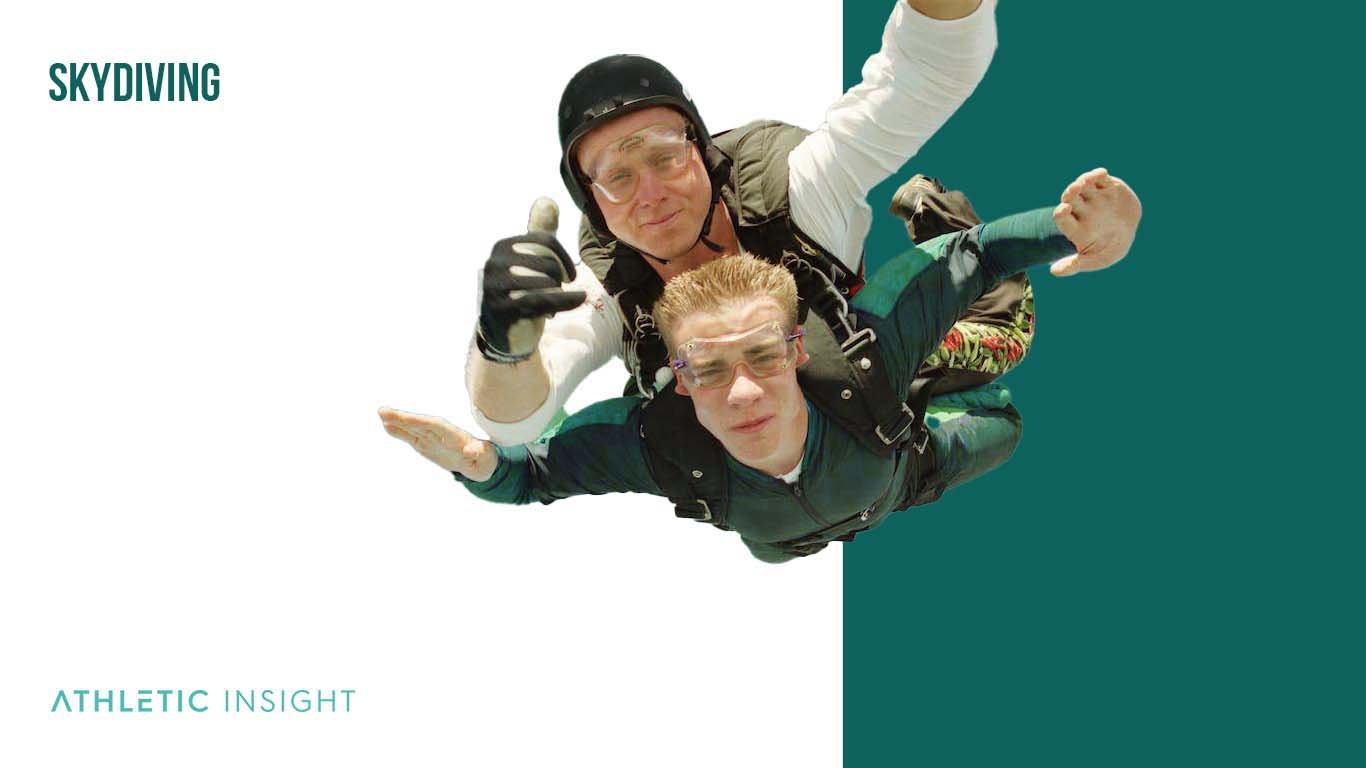An adrenaline rush is a physiological response to stress, excitement, or fear, triggered by the release of adrenaline (epinephrine) and other stress hormones. These rushes of adrenaline can boost physical performance, enhance mental focus, and provide a sense of exhilaration. Unfortunately, adrenaline can also lead to burnout, stress, anxiety and increased blood pressure.
In this article, 12 activities will be explored that can elicit adrenaline rushes, along with their potential benefits and risks. The activities span a broad range of interests, from high-octane sports to everyday experiences.
1. Speaking in Public
Public speaking, despite being a common activity, can be an effective catalyst for an adrenaline rush. The anticipation of addressing a crowd, coupled with the fear of judgment, can trigger the sympathetic nervous system, resulting in increased heart rate, heightened awareness, and sharpened focus.
2. Skydiving
Skydiving is the ultimate adrenaline activity for many, involving a free fall from thousands of feet above ground level. The combination of altitude, speed, and the inherent risk of the activity releases a surge of adrenaline, providing a sense of euphoria and exhilaration.

3. Ziplining
Ziplining involves traversing from one point to another via a cable, often at high speeds and altitudes. This adrenaline-inducing activity capitalizes on the innate human fear of heights, combined with the thrill of speed and the challenge of navigating through varied landscapes.
4. Watching a Horror Movie
Horror movies elicit adrenaline rushes by tapping into our primal fears and stimulating the “fight or flight” response. The combination of suspenseful storytelling, eerie soundscapes, and startling visuals can increase heart rate, provoke anxiety, and trigger adrenaline release.
5. Roller Coasters
Roller coasters are a staple of amusement parks, designed to evoke adrenaline rushes through a blend of speed, height, and gravitational forces. The rapid changes in motion, coupled with the anticipation of each twist and turn, stimulate the release of adrenaline and other stress hormones.
6. Taking a Test
Academic tests can trigger adrenaline rushes due to the pressure of performance and the potential consequences of success or failure. The anticipation of the challenge, along with the desire to excel, can stimulate the sympathetic nervous system and provoke an adrenaline response.
7. Sprint at Full Speed
Running at maximum speed demands a high level of physical exertion, which can lead to adrenaline release. Sprints require explosive bursts of energy, taxing both aerobic and anaerobic systems and promoting the secretion of adrenaline and other stress hormones.

8. Talking to Your Crush
Interacting with a romantic interest can be a potent trigger for adrenaline. The desire to make a positive impression, coupled with the fear of rejection, can provoke an adrenaline response, heightening awareness and sharpening mental acuity.
9. Talking to A Stranger
Engaging in conversation with an unfamiliar individual can elicit an adrenaline rush, particularly if the interaction is spontaneous or unexpected. The uncertainty of the encounter and the potential for social awkwardness can stimulate the release of adrenaline and other stress hormones.
10. Wear a Rock Star Outfit and Go Out
Donning an unconventional or ostentatious outfit can evoke an adrenaline rush, particularly when venturing into public spaces. The potential for attention and judgment can provoke anxiety and stimulate adrenaline release, creating a heightened sense of awareness and excitement.
11. Get up And Dance, Being the First One There
Initiating a dance in a social setting, particularly as the first participant, can elicit an adrenaline rush. The act of exposing oneself to potential scrutiny and judgment, combined with the physical exertion of dancing, can stimulate the release of adrenaline and other stress hormones, enhancing the overall experience.
12. Taking a Risk
Engaging in risk-taking behavior, whether in personal or professional contexts, can provoke an adrenaline response. The potential for loss or failure, coupled with the desire for reward or success, can stimulate the sympathetic nervous system and trigger the release of adrenaline and other stress hormones.
How long does an Adrenaline Rush last?
An adrenaline rush typically lasts for a few minutes, although the precise duration can vary depending on individual factors and the nature of the triggering event. The body’s adrenaline levels gradually return to baseline as the perceived threat or challenge subsides, allowing the physiological effects to dissipate.
What is the Best Adrenaline Activity for Muscle Builders?
The best adrenaline activity for muscle builders is sprinting at full speed. This high-intensity exercise promotes the release of adrenaline and engages both aerobic and anaerobic systems, promoting muscle growth, strength, and power. Sprinting has also been shown to increase testosterone levels, further supporting muscle development.

What is the Best Adrenaline Activity for a Thrill Seeker?
For thrill-seekers, skydiving is arguably the best adrenaline activity. The combination of altitude, speed, and risk inherent in the activity provides an unmatched adrenaline rush, offering a sense of euphoria and exhilaration that is difficult to replicate in other pursuits.
What is the Best Adrenaline Exercise Activity?
High-intensity interval training (HIIT) is the best adrenaline exercise activity, as it combines short bursts of intense exercise with periods of rest or lower-intensity exercise. This approach not only triggers adrenaline release but also offers a range of physical and mental health benefits, including improved cardiovascular health, increased fat-burning potential, and reduced stress levels.
Does Adrenaline Help You Lose Weight?
Adrenaline can contribute to weight loss by boosting metabolic rate, increasing energy expenditure, and enhancing fat mobilization. However, relying solely on adrenaline for weight loss is not a sustainable or healthy approach. Instead, a balanced diet and regular exercise should form the foundation of any weight loss strategy.
What is the Best Adrenaline Activity for Athletes?
The best adrenaline activity for athletes varies depending on individual preferences and the specific demands of their chosen sport. However, high-intensity training activities, such as sprinting, plyometrics, and circuit training, are generally effective in eliciting adrenaline rushes and improving athletic performance across various disciplines.
What Sports Give You an Adrenaline Rush?
High-adrenaline sports include skydiving, bungee jumping, rock climbing, mountain biking, downhill skiing, snowboarding, surfing, and whitewater rafting. These activities often involve elements of risk, speed, and physical challenge, which can trigger adrenaline release and provide a sense of thrill and excitement.
Is Adrenaline Rush Good for Sports?
Adrenaline rushes can be beneficial for sports performance by increasing strength, endurance, focus, and reaction time. However, excessive adrenaline can also impair decision-making, increase the risk of injury, and lead to overtraining or burnout. Athletes should strike a balance between harnessing adrenaline’s performance-enhancing effects and managing the potential downsides of excessive arousal.
Does an Adrenaline Rush Have a Psychological Effect on Athletes?
Yes, adrenaline rushes can have psychological effects on athletes, both positive and negative. On the positive side, adrenaline can enhance mental focus, sharpen reaction time, and provide a sense of exhilaration that can boost motivation and enjoyment.
Conversely, excessive adrenaline can induce anxiety, impair decision-making, and contribute to performance anxiety or “choking” under pressure. Athletes must develop strategies to manage adrenaline effectively and optimize its psychological impact on performance.
What Are the Health Benefits of an Adrenaline Rush?
The health benefits of adrenaline rushes including the following.
- Improved cardiovascular function and circulation
- Increased mental focus and clarity
- Enhanced immune system response
- Increased metabolism and fat mobilization
- Boosted strength and power output
- Elevated pain tolerance
What Are the Health Risks of an Adrenaline Rush?
While adrenaline rushes can offer health benefits, they can also pose risks, particularly when experienced frequently or at excessive levels. Potential health risks include increased heart rate and blood pressure, heightened anxiety, impaired decision-making, reduced immune system, and overtrainging.
- Increased heart rate and blood pressure, which can strain the cardiovascular system
- Heightened anxiety and stress levels, potentially contributing to mental health issues
- Impaired decision-making and increased risk-taking behavior
- Reduced immune function due to chronic stress
- Overtraining or burnout in athletes
What Happens if Adrenaline is Too Low?
Insufficient adrenaline levels can result in symptoms such as fatigue, dizziness, low blood pressure, and difficulty concentrating. In some cases, low adrenaline may be indicative of an underlying medical condition, such as adrenal insufficiency, which requires professional assessment and treatment.
Is a Lot of Adrenaline Good?
While adrenaline can offer performance-enhancing and health benefits, excessive levels can pose risks. Too much adrenaline can strain the cardiovascular system, contribute to anxiety and stress, and impair decision-making. It is crucial to balance adrenaline’s benefits with its potential downsides and manage stress levels for optimal well-being.
Is Adrenaline Good for You Everyday?
Experiencing adrenaline rushes occasionally can be beneficial for both physical and mental health. However, frequent adrenaline rushes or chronic stress can have detrimental effects, including elevated blood pressure, impaired immune function, and increased risk of mental health issues. It is essential to maintain a balance between adrenaline’s benefits and risks, incorporating stress management techniques and self-care practices into daily routines.
Does Adrenaline Develop into Stress?
Adrenaline rushes can contribute to the development of stress when experienced frequently or in response to perceived threats that do not warrant such a heightened physiological response. Over time, chronic stress can have negative effects on both physical and mental health, highlighting the importance of managing adrenaline levels and cultivating effective stress reduction strategies.



